Stunning artwork and waterfall: First look inside Abu Dhabi’s BAPS Hindu temple ahead of its inauguration on February 14 – News

[ad_1]
Front view of the BAPS Hindu Mandir in Abu Dhabi. KT Photos: Neeraj Murali
The first traditional Hindu stone temple in Abu Dhabi, hailed as a spiritual oasis of harmony, is an architectural masterpiece of hand-carved sculptures and a treasure trove of immersive stories.
The BAPS Hindu Mandir stands majestically with its seven towering spiers representing each emirate and two magnificent domes on 27 acres of land donated by UAE President Sheikh Mohamed bin Zayed Al Nahyan.
Stay up to date with the latest news. Follow KT on WhatsApp channels.
Khaleej Times was offered a guided tour of the iconic temple ahead of the much-awaited grand inauguration by current spiritual guru of BAPS Swaminarayan Sanstha, His Holiness Mahant Swami Maharaj, and Indian Prime Minister Narendra Modi on February 14. Open to the public from February 18 through registration.
Built by skilled craftsmen from India, the pink sandstone structure is a testament to the all-inclusive spirit of humanity, where not only Hinduism but also different religions and civilizations have been represented.
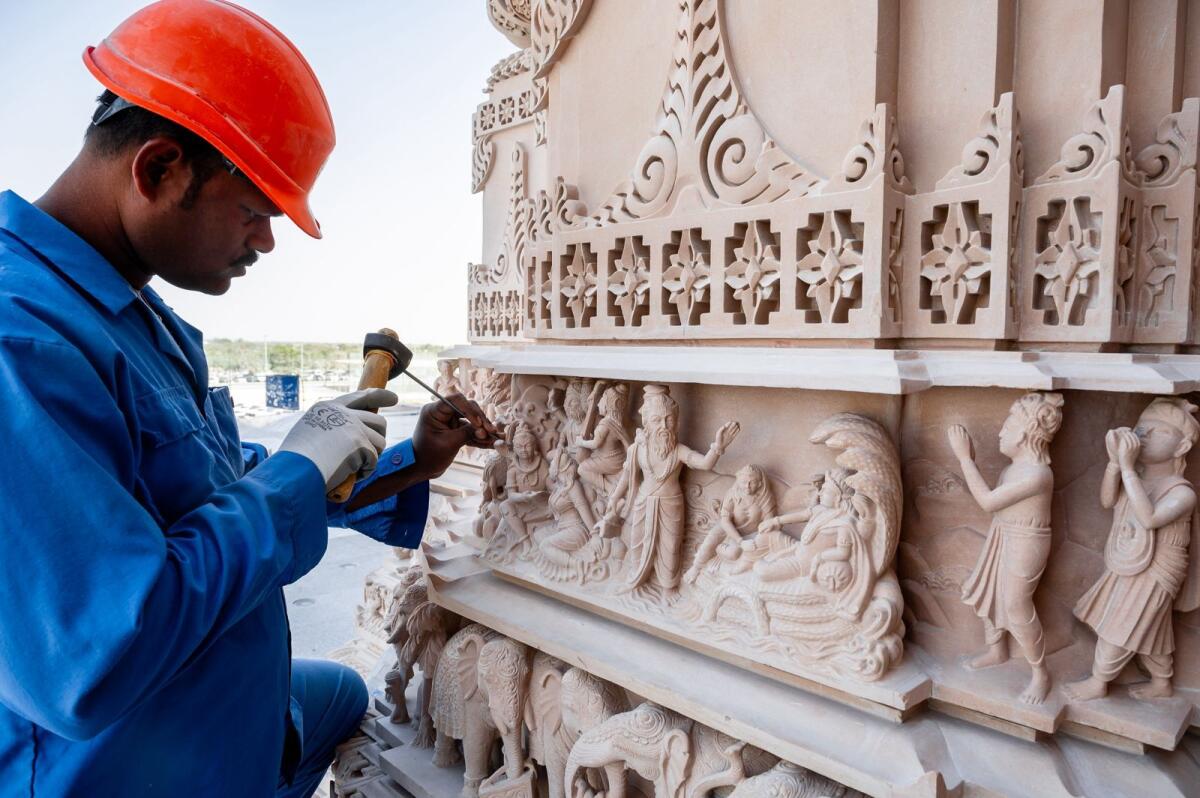
Artisans put finishing touches to stone carvings depicting stories from Hindu scriptures at BAPS Hindu Mandir in Abu Dhabi. Photo: Neeraj Murali
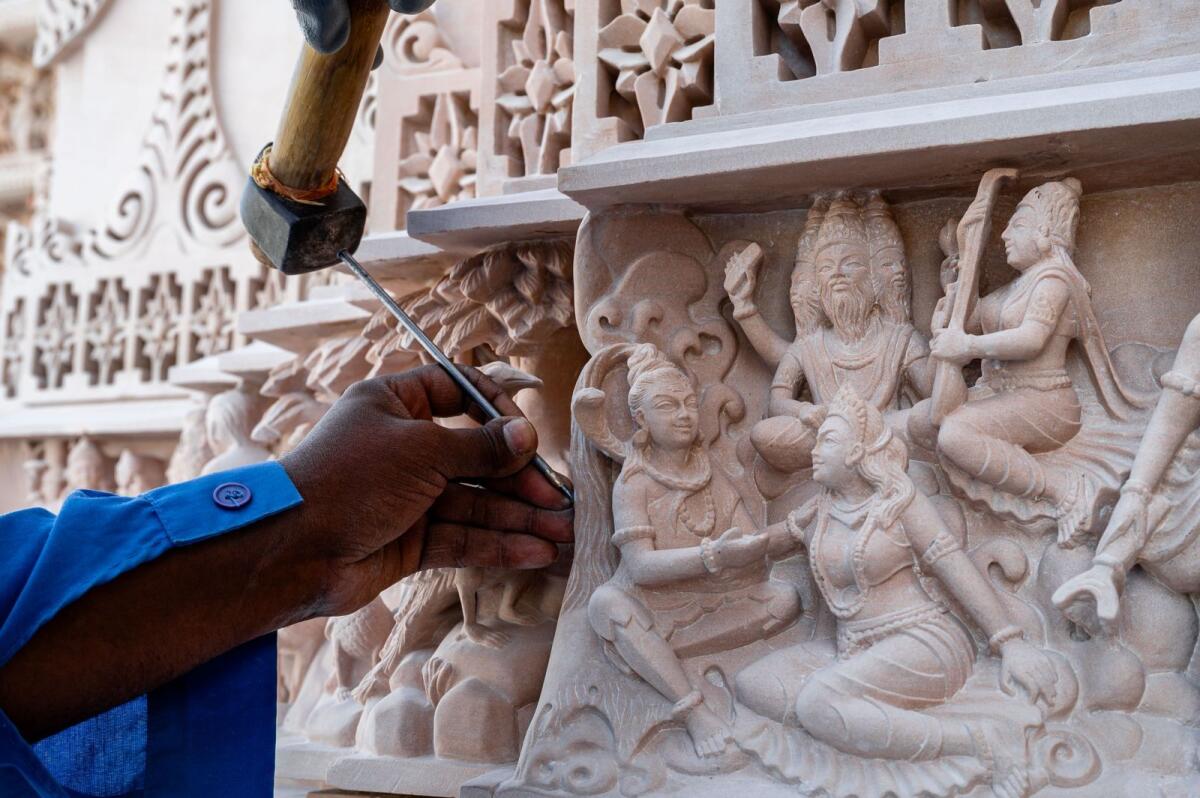

Impressive dune structure
Apart from the splendid view of the iconic temple, the first thing one notices after entering the compound is the impressive dune structure created with sand from the seven emirates. It has been established as a tribute to the vision of Sanstha’s late spiritual leader, His Holiness Pramukh Swami Maharaj, who, while in the middle of a desert in Sharjah in 1997, wished for a temple to be built in Abu Dhabi. That dream has become a reality thanks to the intention and generosity of the leaders of the United Arab Emirates and India and the BAPS organization.
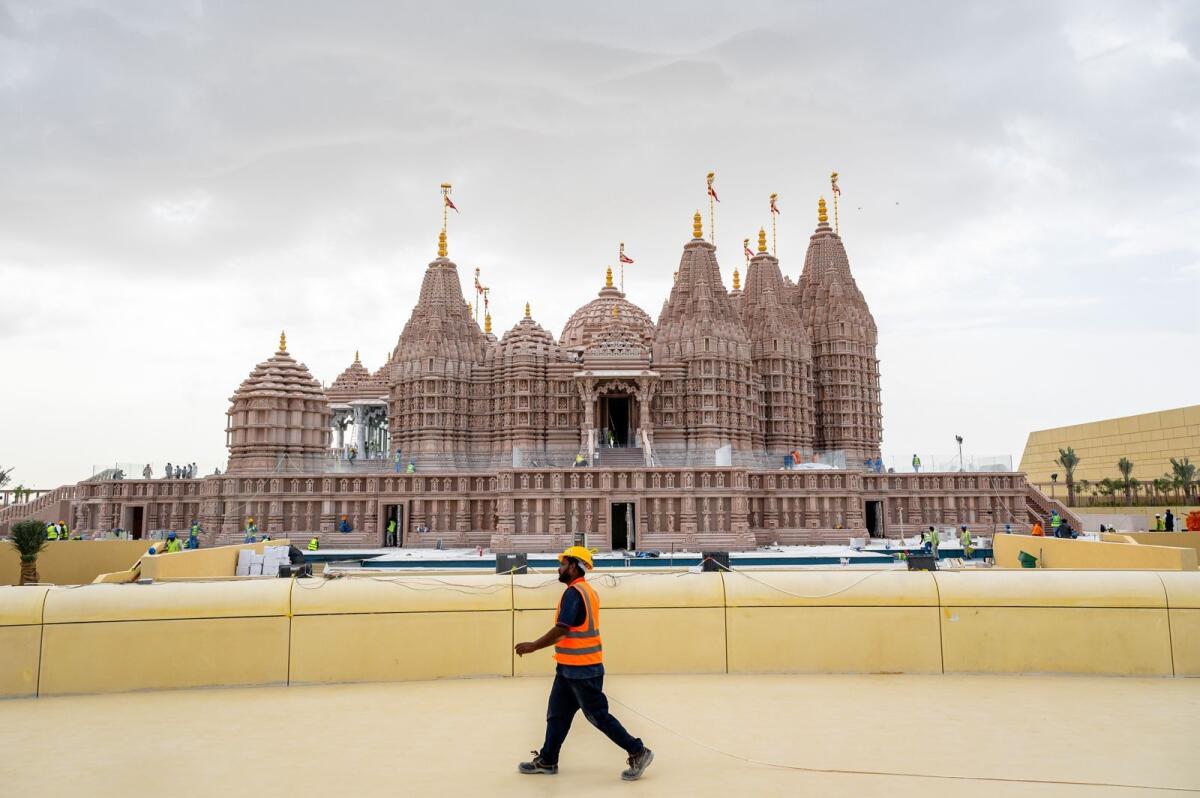
Waterfall feature, sustainability.
A striking waterfall greets visitors before entering the main temple, which represents the source of the sacred Indian rivers Ganges, Yamuna and Saraswati. The floor was built with advanced technology to maintain cool temperatures, allowing visitors to enter the temple premises barefoot.

There are eco-friendly shoe racks, which have 96 bells outside, a symbol to remember the life of the late Pramukh Swami Maharaj.
The benches, tables and chairs in the food court have been made by reusing the wooden pallets used to transport the stones. These features make the temple one of the most sustainable places of Hindu worship.


A visual gift, splendid moments.
The main attraction is the temple itself, which reflects the rich culture and history of India, along with Arabic symbols. The intricate stone carvings narrate key moments from the Indian epics Ramayana and Mahabharata and other narratives from Hindu scriptures and mythology. The temple, built according to the ancient Hindu ‘shilpa shastras’, Sanskrit architectural scriptures, has carved representations of selected value tales from the Arab, Egyptian, Mesopotamian, Aztec and Indian civilizations.
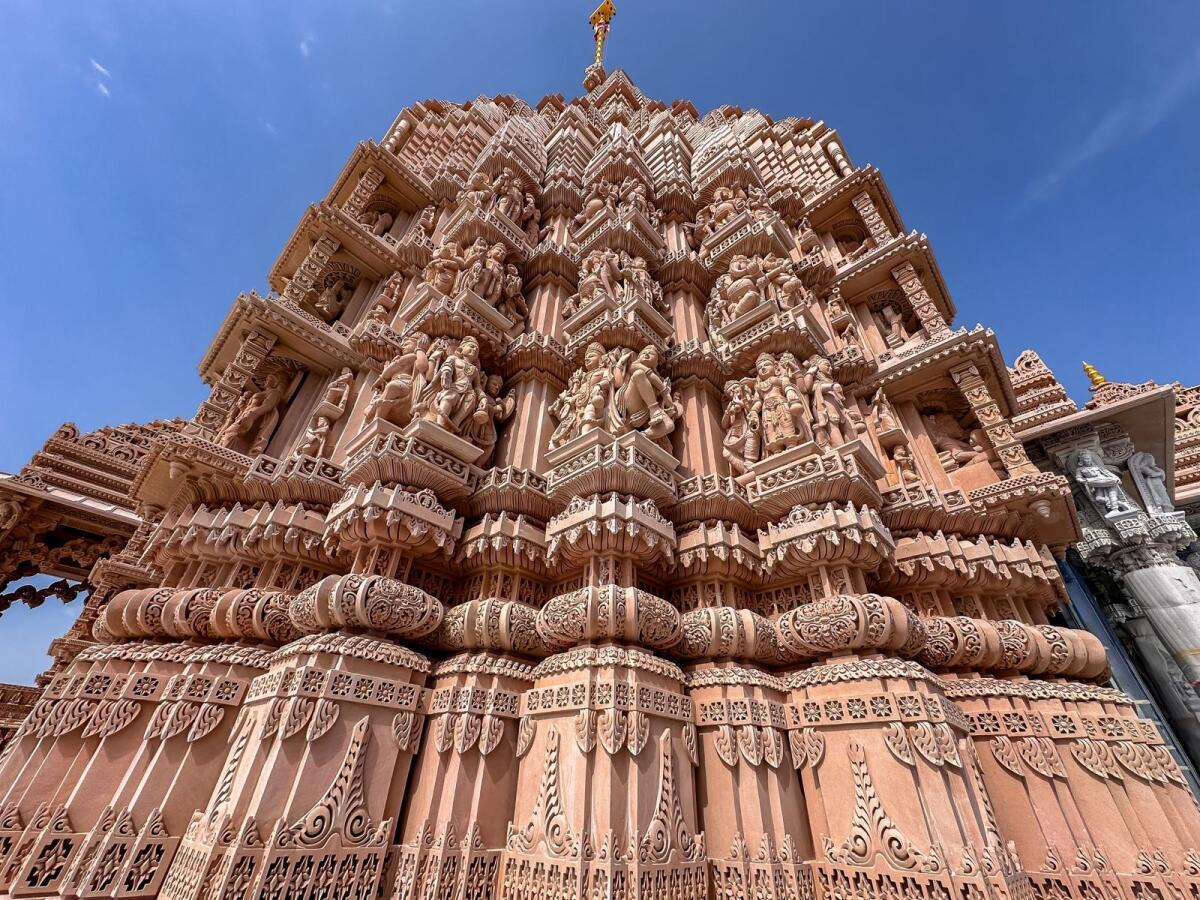

The artwork inside the temple is a sight to behold. Two spectacular carvings capture attention: the “Dome of Harmony” and the “Dome of Peace.”
The ‘Dome of Harmony’ is a captivating symbolism in five layers that embody the essence of earth, water, fire, air and space. A notable masterpiece is the “column of pillars”, which is adorned with thousands of smaller meticulously engraved pillars.
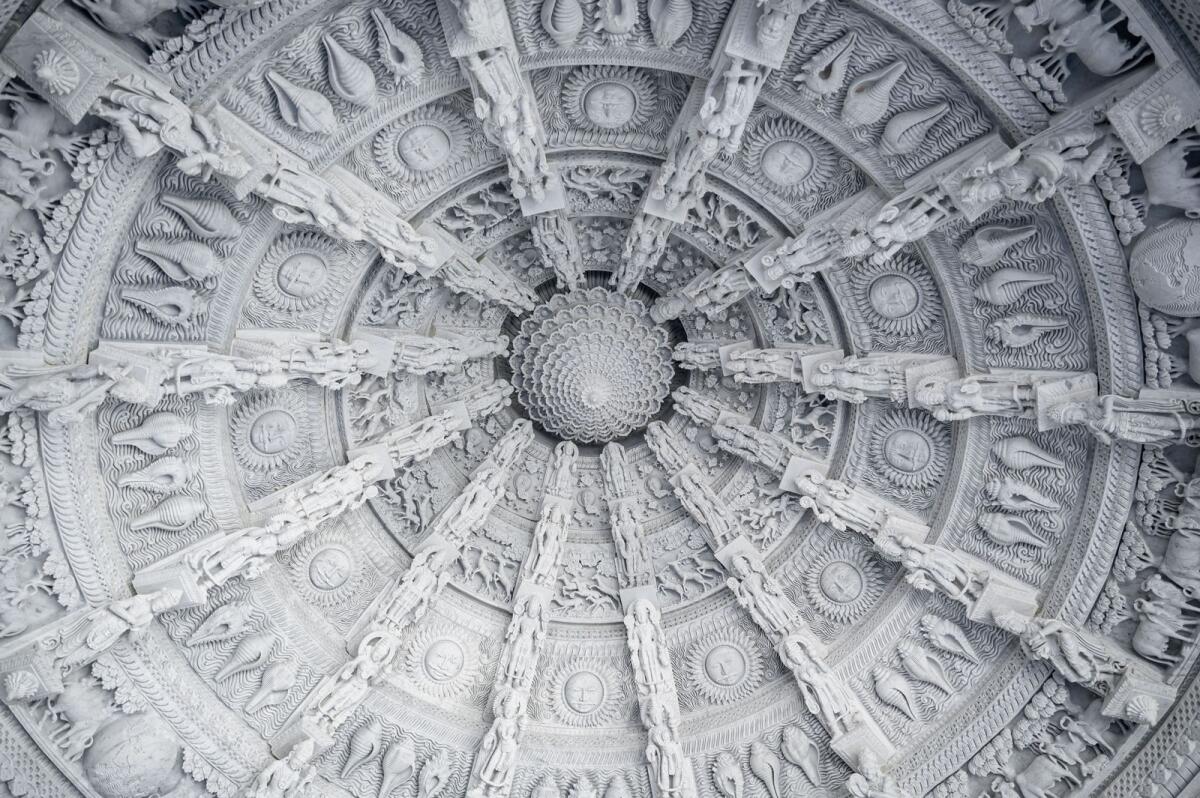

Hindu deities representing different parts of India, including Swaminarayan, Rama, Sita, Krishna and Ayyappan, among others, will be installed in the temple. The deities will be placed under each of the seven spiers. Several events are planned before and after the official opening in Abu Mureikhah. This iconic landmark is all set to become not only a place of worship for Hindus but also learning new values of different faiths, religions and cultures.
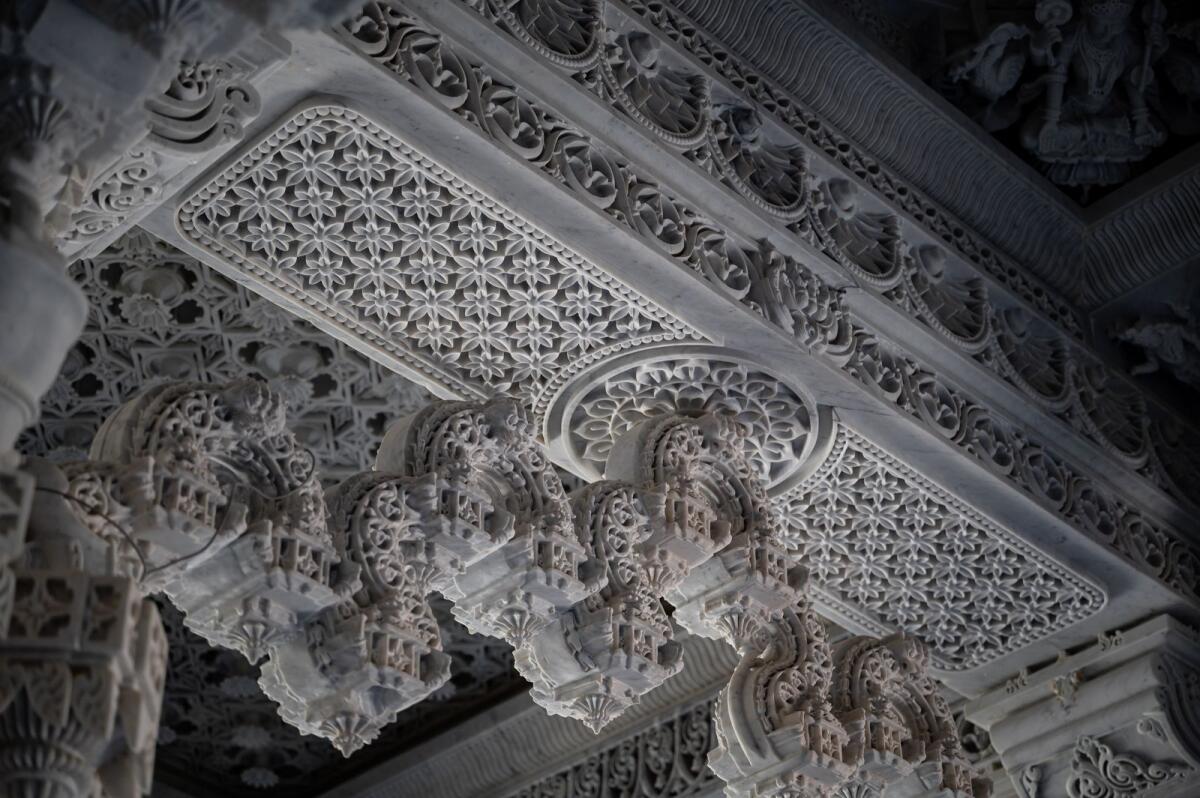
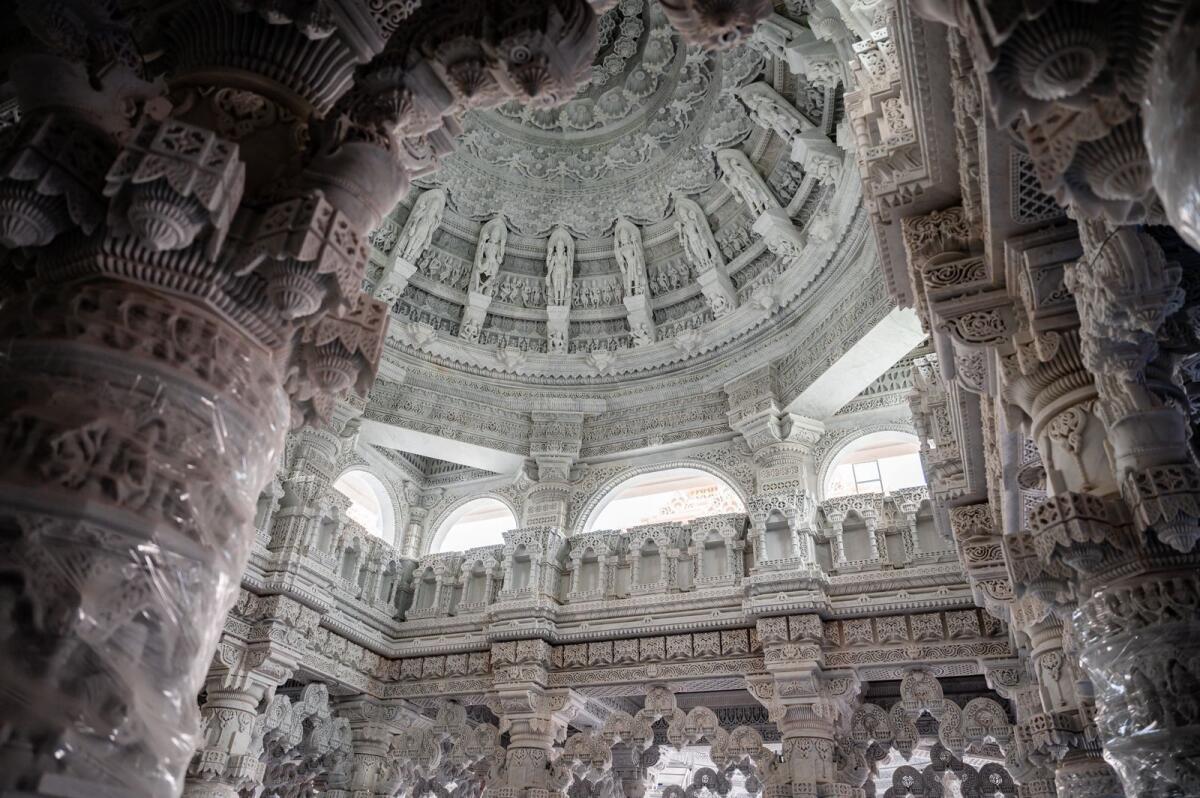
[ad_2]




